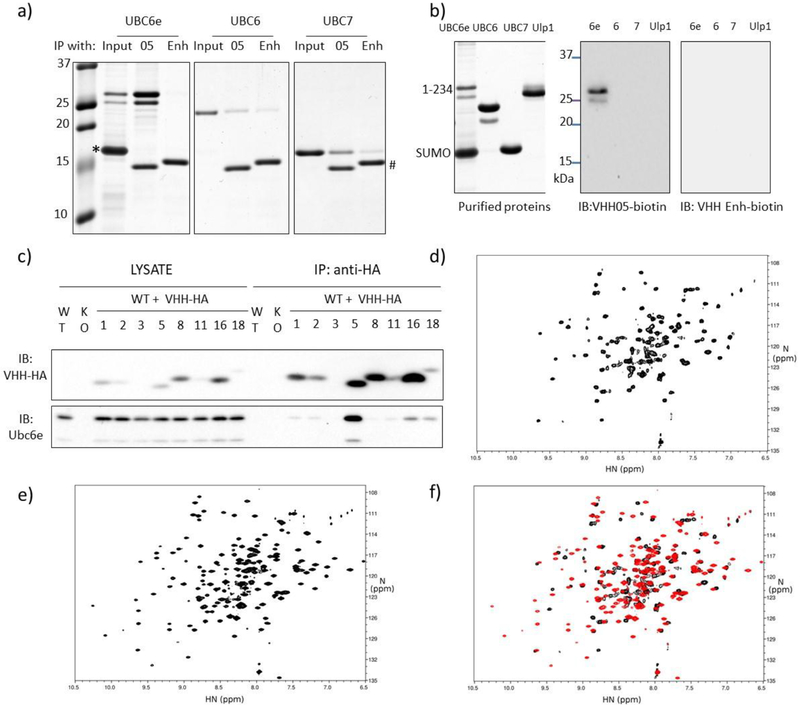Figure 1.
VHH05 can specifically recognize UBC6e with high affinity and good specificity. (a) VHH05 can specifically immunoprecipitate UBC6e. Recombinant UBC6e(1-234), UBC6(1-197) and UBC7 were incubated with sepharose bead-conjugated VHH 6E05 or VHH enhancer that is specific to GFP. *: excess SUMO. #: VHH05 and VHH enhancer. Gels were visualized by Coomassie staining. (b) VHH05 can specifically immunoblot for UBC6e. A Coomassie stained gel (left) and immunoblots (right) are shown. Ulp1: SUMO protease. (c) Endogenous UBC6e can be co-immunoprecipitated with VHH05-HA expressed in MEF cells. WT and KO lanes are samples from MEF cells not transfected with VHH. Numbers identify the VHH construct transduced into the cell. KO refers to MEF cells derived from a mouse line in which UBC6e was genetically ablated. (d-f) Addition of VHH05 induces structural changes in UBC6e. HN-TROSY-HSQC spectrum of 0.2mM 15N-labeled UBC6e (1-197) in the (d) absence or (e) presence of 0.22 mM unlabeled VHH05. (f) Overlay of data in panels d (black) and e (red).

